Rain Guage
-
I was thinking for a cool project I would do a Rain Gauge (but pretty accurate) to complete my offset to the Netatmo.
The "tipping bucket" seems to be the most respected method for measuring rain, So i'd like to build that type in a MySensors environment.
Take a look at the Netatmo's guts which features a small tipping bucket. I was hoping there was someone out there that may have an interest in working together on this, but also has the ability to 3D model (and perhaps access to a MakerBot).
In the US the NOAA (gov't weather bureau) has a standard of 8in diameter pipe for measuring rain. All we need to do is design the tipping mechanism so that we know how many milliliters per tip we get. We will put a funnel inside a plastic pipe to collect the water and drain it onto the tipping mechanism.
We wire in a hall effect sensor and voila! we can measure rain accumulation.
Any interest out there?
Check this out as well. Nice but too pricey for me.
-
I know that it is more than likely that it is my lack of 'empathy' with weather related stuff but why would this be something that you want?
Is there also a real benefit to this compared to, let's say, using Yahoo or an app like WeatherSnoop (on Mac).
Again, not to criticise but I really like to understand so that I can give you an honest answer to your question. -
I know that it is more than likely that it is my lack of 'empathy' with weather related stuff but why would this be something that you want?
Is there also a real benefit to this compared to, let's say, using Yahoo or an app like WeatherSnoop (on Mac).
Again, not to criticise but I really like to understand so that I can give you an honest answer to your question.@marceltrapman said:
I know that it is more than likely that it is my lack of 'empathy' with weather related stuff but why would this be something that you want?
Is there also a real benefit to this compared to, let's say, using Yahoo or an app like WeatherSnoop (on Mac).
Again, not to criticise but I really like to understand so that I can give you an honest answer to your question.There are really two reasons:
-
In South Florida, the rain in the summer is highly localized. It can be raining intensely a half mile away and not where you are.
-
fun
-
-
Both make sense, especially #2 :)
-
Something like this:
I just need to do a few more CG calculations to make sure it tips:
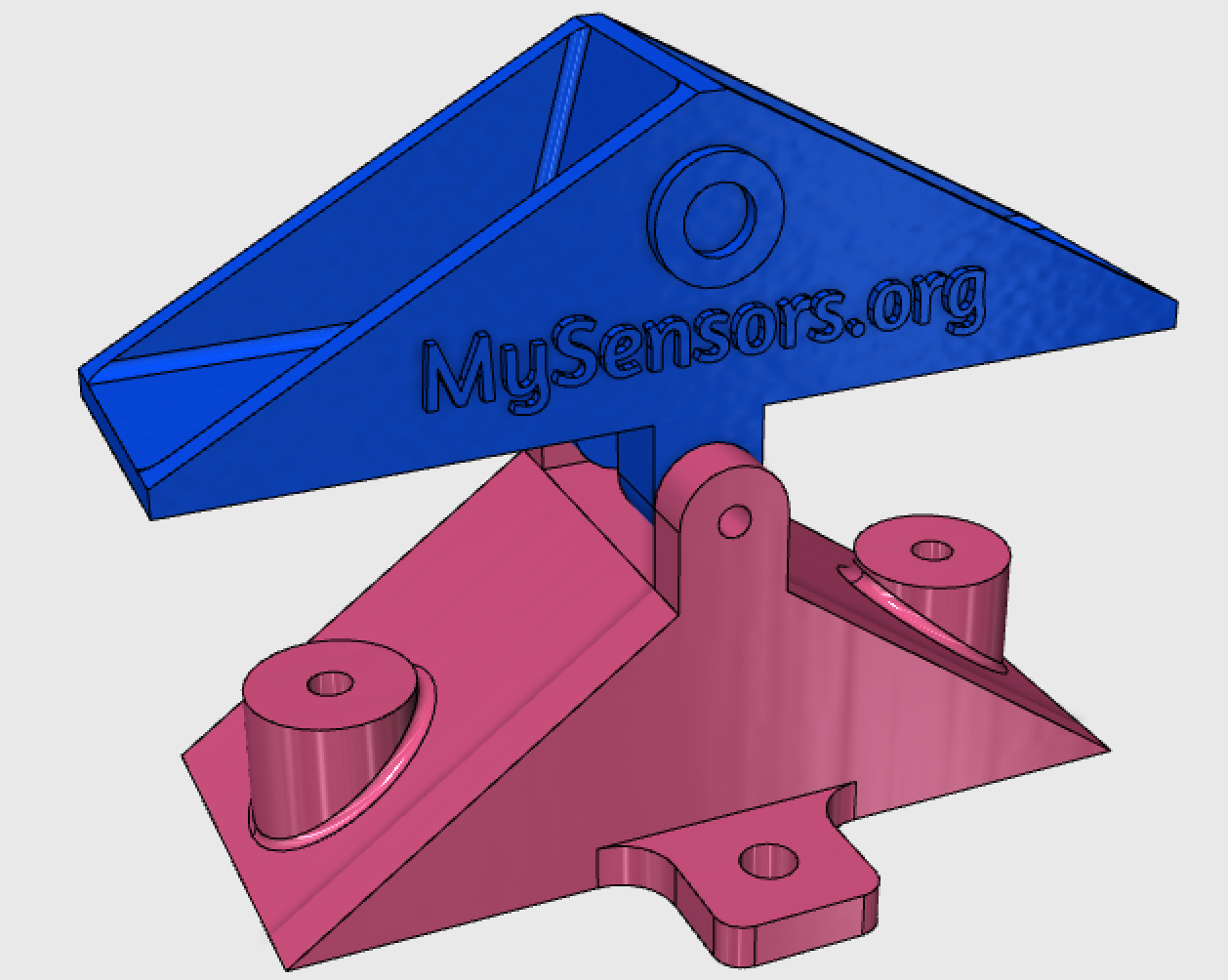

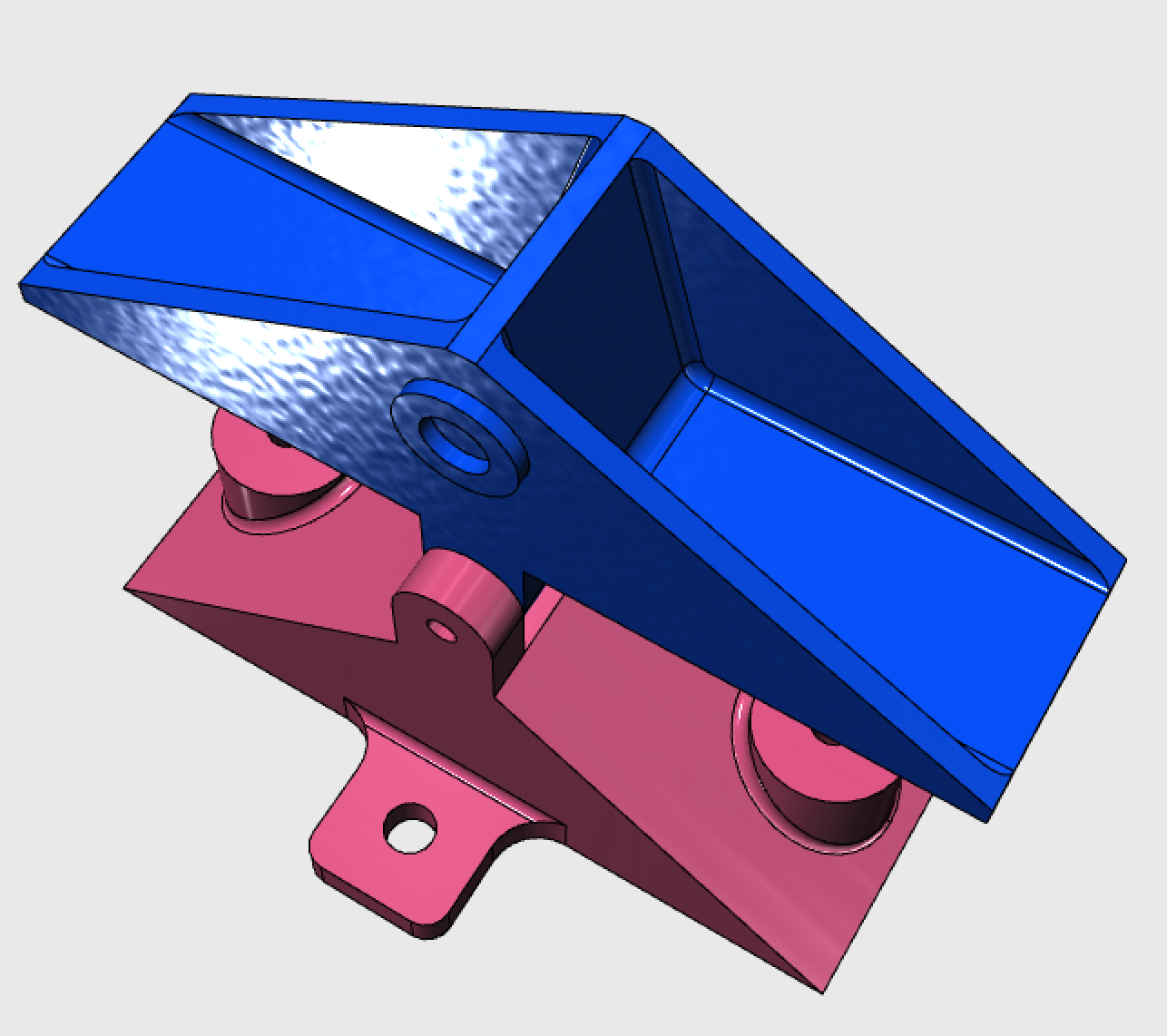
-
Nice, I wish I had the time and skills to do something like this too!
-
Nice, I wish I had the time and skills to do something like this too!
Thanks. It was actually pretty straightforward except for trying to remember how to get the Center of Gravity. In the end, the triangle method worked! Besides, you can just use this and it will take you no time :)
Attached is the working print. I cannot believe that a guy 15km away did the print for $16 (plus tax). He printed it in under an hour. It is smallish, about 100mm long by 100mm high by 25mm wide assembled.
I still have to mount a magnet to make sure it tips, but looking good. Check out the YouTube...
Photo:
-
@BulldogLowell Can't say much except: wow :)
-
Wow...Impressed!
Like Marcel..i thought why not just use weather service? but before i read your reply i already thought of the reason...fun!Whats more impressive..and just freaking awesome to be able to email a design file to someone...jump in the car and go and pickup a physical object!!
How did you find the printer guy?
-
Wow...Impressed!
Like Marcel..i thought why not just use weather service? but before i read your reply i already thought of the reason...fun!Whats more impressive..and just freaking awesome to be able to email a design file to someone...jump in the car and go and pickup a physical object!!
How did you find the printer guy?
I used 3dhubs.com.
They connect you with local folks who have the machines and want to make money with them. Really awesome,
I had to quote a few before I found the right price, though.
Check out the website, and put your location in. It will show you all of the local folks that do it.
(Once I know that this works, I'll post the geometry or a link to it in case anyone wants to make one. I just want to make sure it works with he magnet first.)
-
Thank you again!
- For the idea ( and when you think it is ready the files :)
- For the suggestion of 3dhubs.com I will certainly use it to make some money with my upcoming printer...
-
This is awesome! I was also wanting to do this. You beat me to it again (and I'm ok with that) :)
I live in Colorado and we also have very localized rain. I would like a rain meter so I know when and how often I need to irrigate. I was also thinking it would be useful to use VeraAlerts to announce if a window is open and it's raining.
How much rain water does it take to tip? From the video it seems like it would need quite a bit to tip. Would it be good to make the buckets(?) a little smaller so it would be more precise? Keep in mind I have no idea how big it is or how these things work in general so I could be way off with the question.
Great job though! Keep up the great work.
-
This is awesome! I was also wanting to do this. You beat me to it again (and I'm ok with that) :)
I live in Colorado and we also have very localized rain. I would like a rain meter so I know when and how often I need to irrigate. I was also thinking it would be useful to use VeraAlerts to announce if a window is open and it's raining.
How much rain water does it take to tip? From the video it seems like it would need quite a bit to tip. Would it be good to make the buckets(?) a little smaller so it would be more precise? Keep in mind I have no idea how big it is or how these things work in general so I could be way off with the question.
Great job though! Keep up the great work.
@petewill said:
This is awesome! I was also wanting to do this. You beat me to it again (and I'm ok with that) :)
I live in Colorado and we also have very localized rain. I would like a rain meter so I know when and how often I need to irrigate. I was also thinking it would be useful to use VeraAlerts to announce if a window is open and it's raining.
How much rain water does it take to tip? From the video it seems like it would need quite a bit to tip. Would it be good to make the buckets(?) a little smaller so it would be more precise? Keep in mind I have no idea how big it is or how these things work in general so I could be way off with the question.
Great job though! Keep up the great work.
I designed it to about 8ml, I have to calibrate it because of the meniscus, which looks substantial. I can tweak it by raising/lowing the allen cap screws.
there are 25 cubic inches of water per inch of rain in an 8in gauge. So considering that there are 16.38ml per cubic inch, that gets us to approx 50 tips per inch of rain or 0.02in (0.5mm) resolution. I believe for me that's OK, particularly here i s SoFla where we get a lot of rain.
I see your point regarding precision but you can easily go smaller. I wonder if I can make a funnel that will actually drop the water to the bottom if we only received 0.5mm of rain. I'll have to apply something to the funnel to lower the surface tension of the droplets, I think. The other consideration is offsetting the mass of the magnet, which is small but dense.
So unless you get enough water to fall down and tip it, it won't likely record less than say 1mm of rain.
-
@petewill said:
This is awesome! I was also wanting to do this. You beat me to it again (and I'm ok with that) :)
I live in Colorado and we also have very localized rain. I would like a rain meter so I know when and how often I need to irrigate. I was also thinking it would be useful to use VeraAlerts to announce if a window is open and it's raining.
How much rain water does it take to tip? From the video it seems like it would need quite a bit to tip. Would it be good to make the buckets(?) a little smaller so it would be more precise? Keep in mind I have no idea how big it is or how these things work in general so I could be way off with the question.
Great job though! Keep up the great work.
I designed it to about 8ml, I have to calibrate it because of the meniscus, which looks substantial. I can tweak it by raising/lowing the allen cap screws.
there are 25 cubic inches of water per inch of rain in an 8in gauge. So considering that there are 16.38ml per cubic inch, that gets us to approx 50 tips per inch of rain or 0.02in (0.5mm) resolution. I believe for me that's OK, particularly here i s SoFla where we get a lot of rain.
I see your point regarding precision but you can easily go smaller. I wonder if I can make a funnel that will actually drop the water to the bottom if we only received 0.5mm of rain. I'll have to apply something to the funnel to lower the surface tension of the droplets, I think. The other consideration is offsetting the mass of the magnet, which is small but dense.
So unless you get enough water to fall down and tip it, it won't likely record less than say 1mm of rain.
Neodymium magnet in and works fine. I had to clean out the countersink hole with a drill to get it in and used E6000 glue to hold it.
Now onto the hall effect sensor, wiring it up and of course the sketch.
The 123D Design file is also attached if anyone wants to make one, play with the design, make fun of it, etc. The .stl file is 13Mb, I can email that if you want.
If you want a print, let me know. I also have a few magnets and sensors, so I can send what you need for the project.
I think I'm going to design a housing for the electronics too. I'm not sure I can find the right project box for this (I really just want to print more parts :)
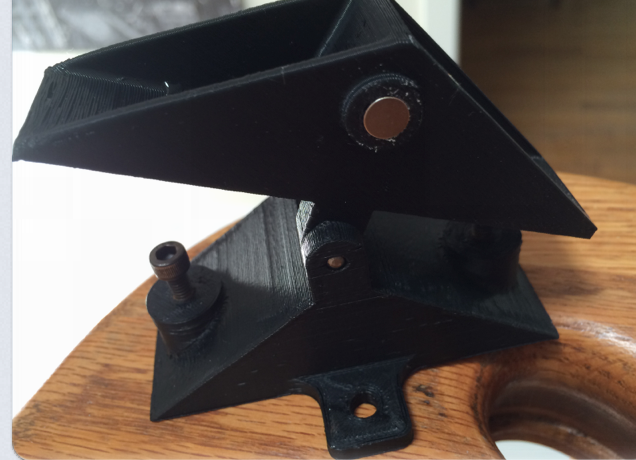
-
Isn't it enough space in the foot for the electronics?
Or perhaps make foot a little bigger in v2.0 to fit it there ;)right!
While I want to keep the height low, I can modify the foot to include the whole of the electronica for sure. a radius of 4in provides a nice area for a lot of stuff.
plus, I was thinking about having the antenna at the bottom of the device...
good idea, thanks! It is better that we know that the tipping bucket will work (volumetrically) at this point.
time to get onto the rest of the physical design, I guess.
-
Thank you again!
- For the idea ( and when you think it is ready the files :)
- For the suggestion of 3dhubs.com I will certainly use it to make some money with my upcoming printer...
@marceltrapman said:
- For the suggestion of 3dhubs.com I will certainly use it to make some money with my upcoming printer...
Don't forget my "one free part referral" fee!!!
-
Neodymium magnet in and works fine. I had to clean out the countersink hole with a drill to get it in and used E6000 glue to hold it.
Now onto the hall effect sensor, wiring it up and of course the sketch.
The 123D Design file is also attached if anyone wants to make one, play with the design, make fun of it, etc. The .stl file is 13Mb, I can email that if you want.
If you want a print, let me know. I also have a few magnets and sensors, so I can send what you need for the project.
I think I'm going to design a housing for the electronics too. I'm not sure I can find the right project box for this (I really just want to print more parts :)

@BulldogLowell I have read about techniques to include the magnet while printing.
You can do that by designing a hole, stop the printer when the hole is about to be covered, insert the magnet and continue printing.I will think about you once the printer is there (a couple of months from now)...
-
@BulldogLowell I have read about techniques to include the magnet while printing.
You can do that by designing a hole, stop the printer when the hole is about to be covered, insert the magnet and continue printing.I will think about you once the printer is there (a couple of months from now)...
So, I managed to finish a sketch for the Rain Gauge.
It creates two devices:
- an information panel that displays last 24hours rain and the current rate of rain. along with 5 buckets of time so that you may see up to 5 days total rainfall.
It stores 24, 48, 72, 96 and 120 hrs rain in the Variable1-Variable5 respectively.
I customized the Rain Sensor to look more like a rain sensor and be more descriptive on the front panel, using the image from the moisture sensor, which I thought looked better. - a binary sensor that you can set. Put in the hours you wish to evaluate (1-120) and the rainfall you desire to trip the device. They are entered as Variable1 and Variable 2.
images attached, take a look and comments are appreciated.
I would like to do more with the presentation of the sensors on the vera UI... I'll do that after I get this all together, if I can.

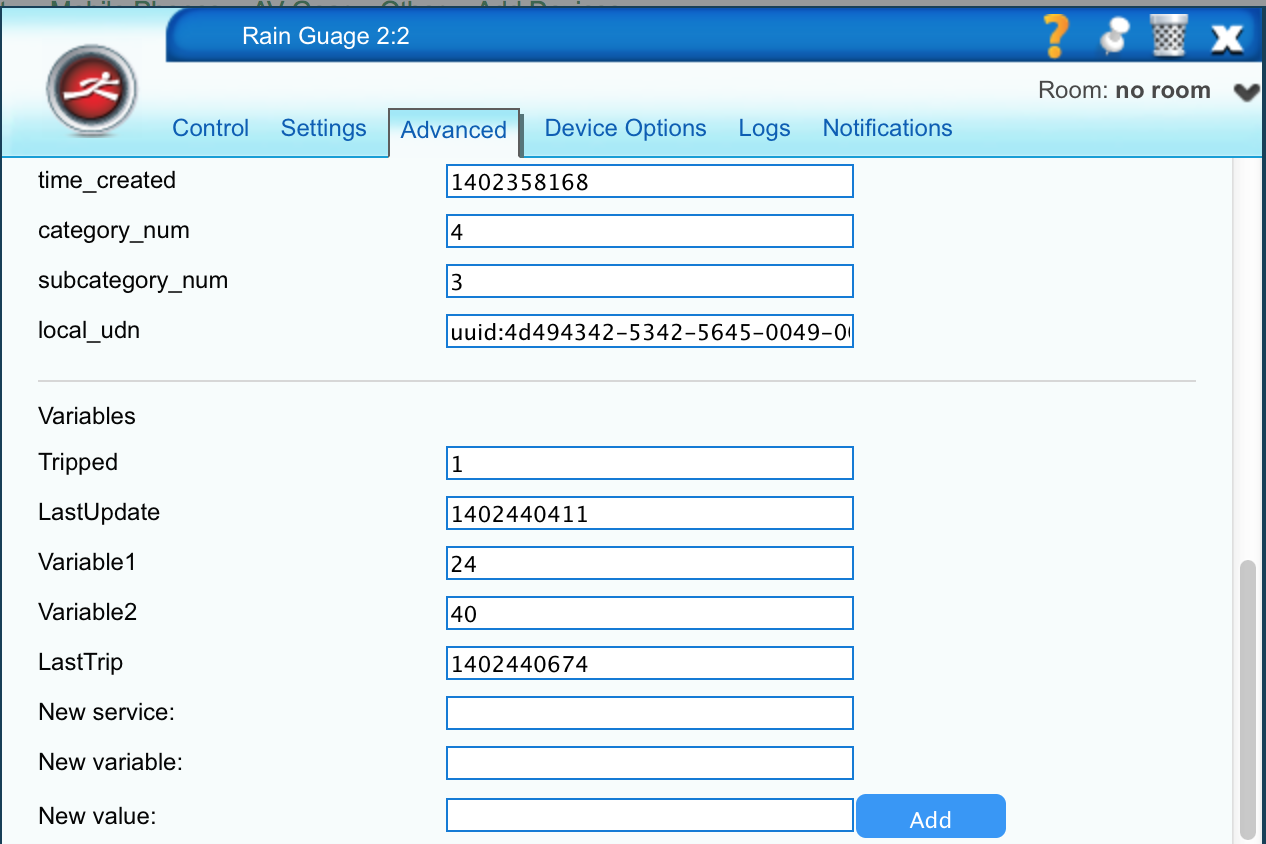
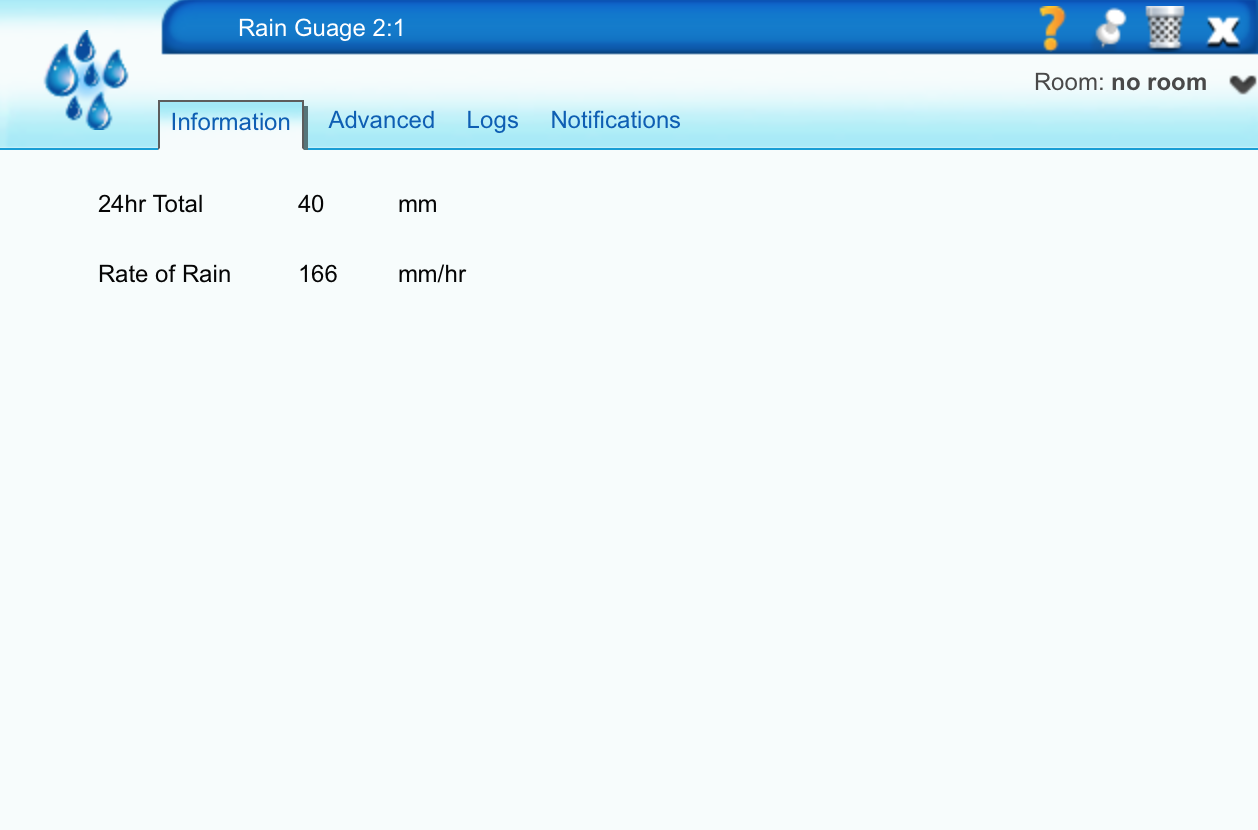

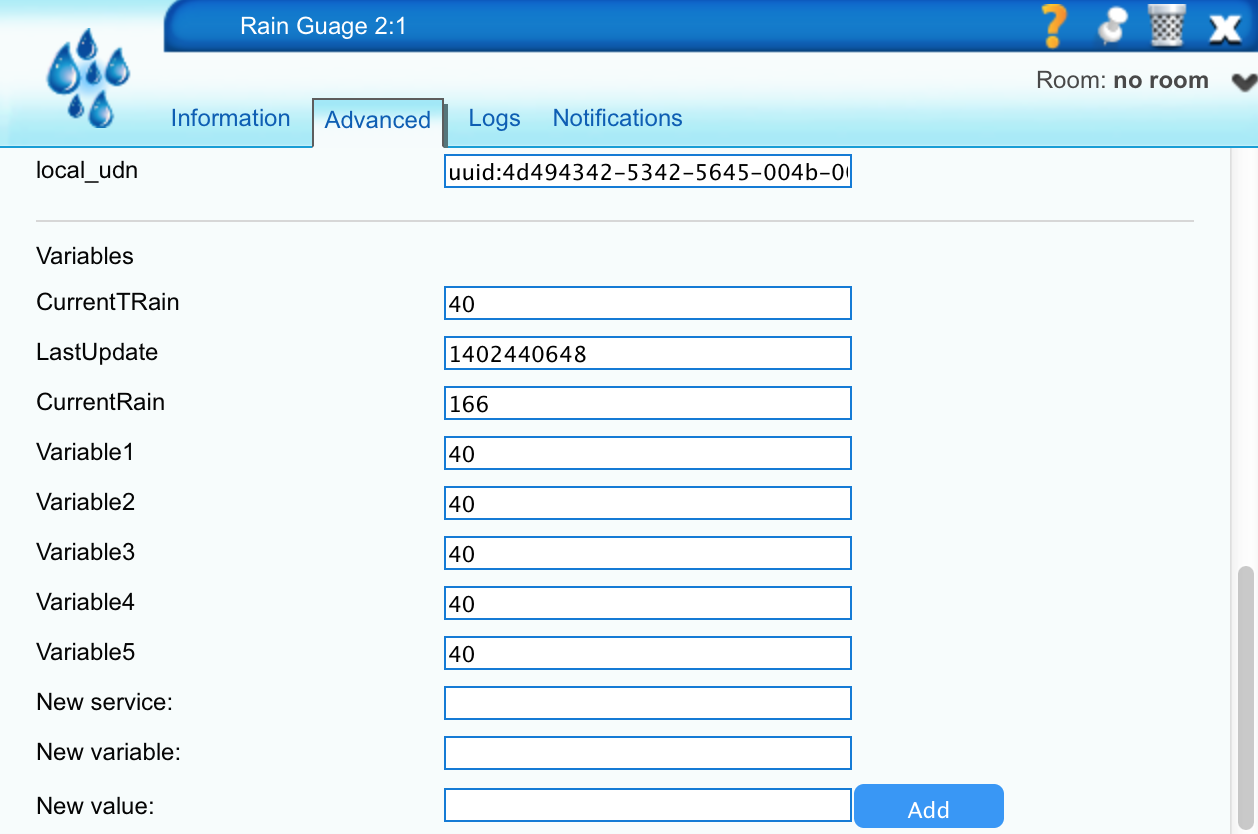
- an information panel that displays last 24hours rain and the current rate of rain. along with 5 buckets of time so that you may see up to 5 days total rainfall.
